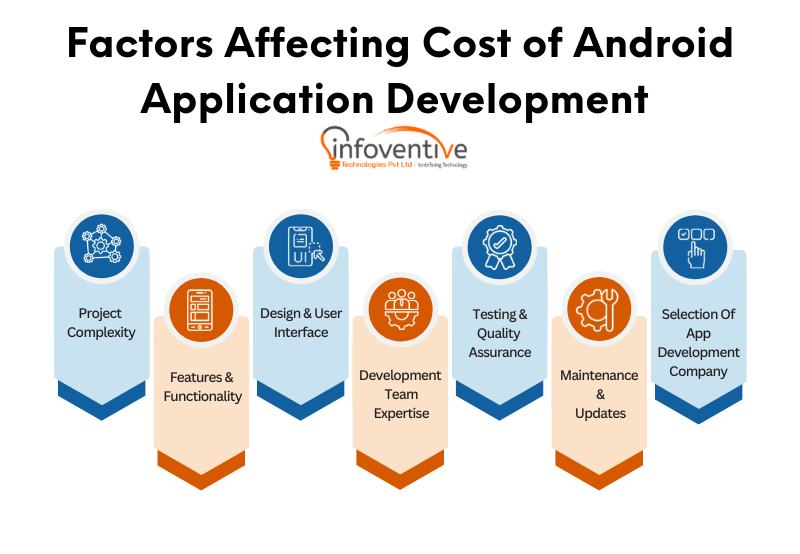
Developing a mobile app involves multiple steps, from planning to design, development, and launch. Understanding the factors that influence the cost of building a mobile app is essential to manage expectations and allocate resources effectively. While every mobile app is unique, several key factors determine the overall development cost.
1. App Complexity
One of the primary factors affecting app cost is its complexity. The more features and functionalities an app requires, the higher the development cost. Apps can generally be classified into three categories based on their complexity:
- Simple Apps: These typically include basic features like a user login, simple navigation, and a few screens. Examples include apps that show static content or apps with basic functionalities like to-do lists.
- Moderately Complex Apps: These involve more advanced features like real-time chat, integration with APIs, and complex user interfaces. Social networking apps and news apps generally fall into this category.
- Highly Complex Apps: Apps that require integration with hardware, multi-platform functionality, or advanced features like augmented reality (AR), machine learning, or real-time communication are highly complex and costly to build. Examples include gaming apps, e-commerce platforms, or financial apps.
2. Design and User Experience (UX/UI)
The design of your app plays a significant role in its cost. A simple, functional design may cost less than a custom, interactive, and highly polished design. Elements that influence design costs include:
- UI/UX Design: The look and feel of your app impact user engagement. Custom animations, transitions, and unique elements increase the design cost.
- Prototyping and Wireframing: These are preliminary stages that help visualize the app’s flow and user interface, which can add to the overall expense.
A well-designed app improves usability and enhances user experience, making it a vital investment that can affect the app’s success in the long run.
3. Platform (iOS vs. Android)
The platform on which you choose to launch your app significantly impacts the cost. Building apps for different platforms requires separate development processes:
- Native iOS and Android Apps: If you want to develop apps separately for iOS and Android, you will need to allocate resources for two separate teams. This increases both time and cost.
- Cross-Platform Apps: With cross-platform frameworks like Flutter or React Native, it’s possible to develop apps for both platforms simultaneously. However, the performance might not match that of a fully native app, depending on the complexity of the features.
Each platform has its specific development tools and languages, which can also affect the project cost.
4. App Features and Functionalities
The number and type of features you want in your app play a crucial role in determining development costs. Some common features that can increase costs include:
- Push Notifications: A feature that requires backend development and integration.
- Payment Gateway Integration: Secure payment functionality, such as in-app purchases or subscriptions.
- Geolocation/Maps: Adding location-based services or maps requires more development effort.
- Backend Infrastructure: If your app needs a server or database to store and process data, developing a robust backend infrastructure will add to the cost.
- Social Media Integration: Allowing users to log in via social media accounts or share content on social platforms requires API integration.
Each added feature means additional time, coding, and testing, which leads to a higher overall cost.
5. Development Team Location and Expertise
The location and expertise of your development team can also affect the cost of mobile app development. Generally, developers from different regions charge varying rates:
- North America and Western Europe: These regions typically have higher hourly rates due to the higher cost of living and specialized expertise.
- Eastern Europe and Asia: Countries like India, Ukraine, and the Philippines offer competitive rates while maintaining high-quality work. You may find a larger pool of developers with the necessary skills at a lower cost.
It’s essential to balance quality and cost when selecting a development team. A highly skilled team in a high-cost region might be more efficient, whereas a cost-effective team may require more time for development and debugging.
6. App Maintenance and Updates
After the initial launch, your app will require ongoing maintenance, updates, and bug fixes to ensure smooth operation. Maintenance includes:
- Bug Fixes: Resolving any errors or issues that users encounter after launch.
- Feature Upgrades: Adding new features, improving the UI, or adding new functionalities over time.
- OS and Device Compatibility: Ensuring that your app is compatible with future versions of iOS and Android devices.
Maintenance costs are often overlooked but can amount to a significant portion of the total cost over the app’s lifecycle.
7. Security and Compliance
For apps that handle sensitive data, such as banking, healthcare, or e-commerce apps, ensuring strong security measures is essential. Security features such as encryption, secure authentication, and data storage solutions can increase development costs.
Furthermore, compliance with legal and regulatory standards like GDPR (General Data Protection Regulation) or HIPAA (Health Insurance Portability and Accountability Act) in healthcare apps will add complexity to the development process, leading to additional costs.
8. Testing and Quality Assurance
A significant portion of the mobile app development process is dedicated to testing to ensure that the app works seamlessly across devices and operating systems. Extensive testing is needed for:
- Functionality Testing: Verifying that all features perform as expected.
- Usability Testing: Ensuring a smooth user experience.
- Performance Testing: Ensuring the app runs efficiently, even under heavy load.
- Security Testing: Identifying and fixing vulnerabilities.
The more thorough the testing process, the higher the cost. A well-tested app, however, can lead to better user ratings and fewer issues post-launch, which can benefit your brand in the long term.







